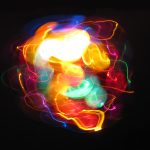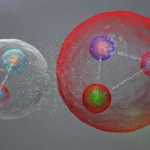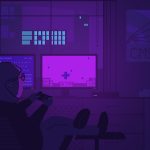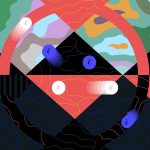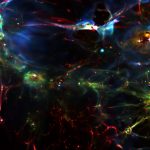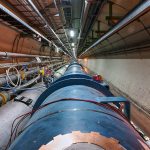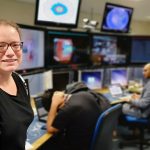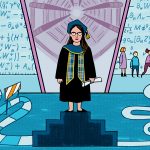One of the latest discoveries from the LHC takes the properties of photons beyond what your electrodynamics teacher will tell you in class. For most of the year, the LHC collides protons, but for about a month each fall, the LHC switches things up and collides heavy atomic nuclei, such as lead ions. The main purpose of these lead collisions is to study a hot and dense subatomic fluid called the quark-gluon plasma, which is harder to create in collisions of protons. But these ion runs also enable scientists to turn the LHC into a new type of machine: a photon-photon collider.
Sarah Charley
Sarah Charley is senior writer in the Fermilab Office of Communication.
A re-examination of a particle discovered in 2015 has scientists debating its true identity. A recent analysis by the LHCb collaboration at CERN raises questions about the identity of this pentaquark—and may have taken scientists back to square one in the search for a particle that could shed light on questions about color.
With the warmth of holiday cheer in the air, some physicists decided to hit the pub after a conference in December 2014 and do what many physicists tend to do after work: keep talking about physics. That evening’s topic of conversation: dark energy particles. The chat would lead to a new line of investigation at the Large Hadron Collider at CERN. Every second, the universe grows a little bigger. Scientists are using the LHC to try to find out why.
If you want to visit the Pasner family farm, you’ll need a truck with four-wheel drive. You’ll need to traverse 4 miles of bumpy dirt road deep into the countryside of Penn Valley, California. But once you arrive, you’ll be greeted by fields of organic onions and garlic, nestled between rolling grassy hills speckled with oak trees. For physicist Jake Pasner, this will always be home.
During the last four years, LHC scientists have filled in gaps in our knowledge and tested the boundaries of the Standard Model. Since the start of Run II in March 2015, they’ve recorded an incredible amount of data —five times more than the LHC produced in Run I. The accelerator produced approximately 16 million billion proton-proton collisions — about one collision for every ant currently living on Earth.
During the short heavy-ion run at the Large Hadron Collider at CERN, every moment counts. As one scientist puts it, experimenters have “four weeks to collect all the data we will use for the next three years.” The data arising from LHC’s collisions of heavy nuclei, such as lead, will be used to study the properties of a very hot and dense subatomic material called the quark-gluon plasma.

